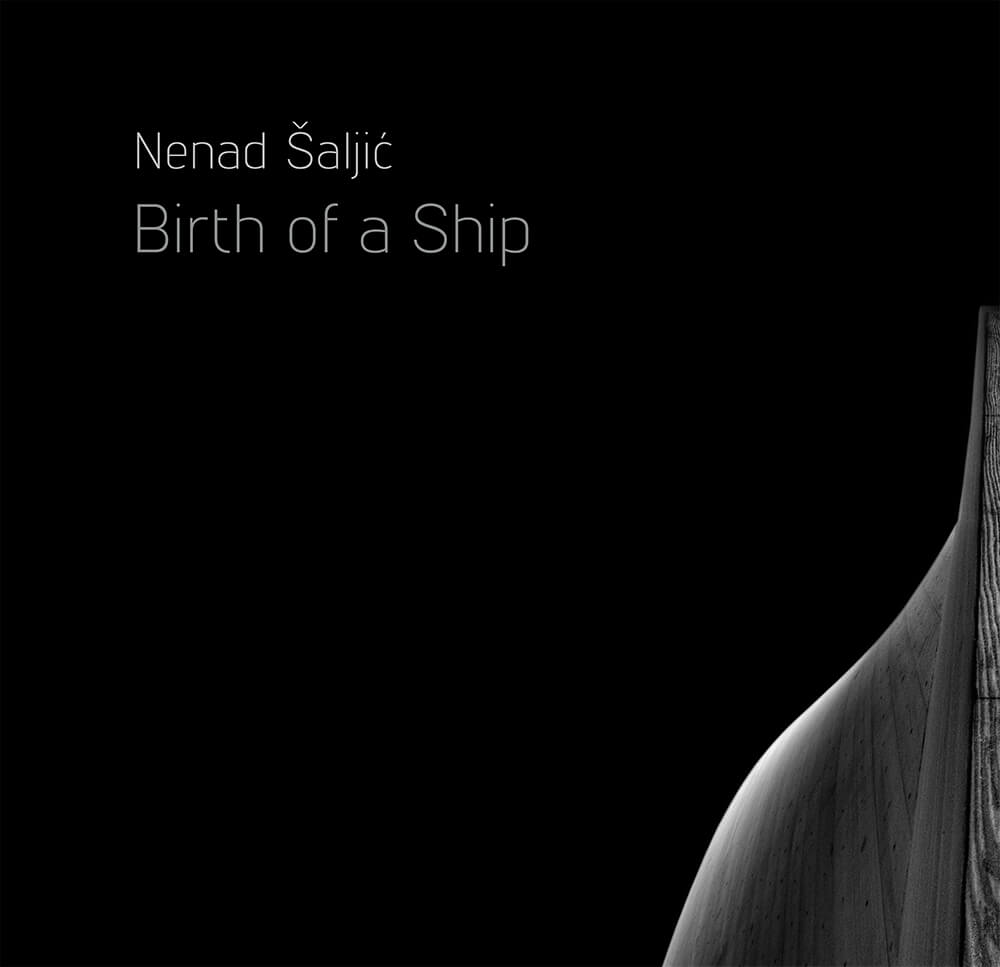 Photographer Nenad Saljic’s book Birth of a Ship begins like a traditional fairy-tale; a piece of poetic prose sets the scene. We learn that in a feat that feels akin to a production of Noah’s Ark, an idea of a building a boat was formed and the bones of it began to take shape soon after. Documenting the developing construction, the images that form Birth of a Ship are interweaved with geometric curved line across white pages, with poetry. This poetry is written by Miki Bratanic; these nautical nuances placed between the pages lend further spirit to the photographs.
Photographer Nenad Saljic’s book Birth of a Ship begins like a traditional fairy-tale; a piece of poetic prose sets the scene. We learn that in a feat that feels akin to a production of Noah’s Ark, an idea of a building a boat was formed and the bones of it began to take shape soon after. Documenting the developing construction, the images that form Birth of a Ship are interweaved with geometric curved line across white pages, with poetry. This poetry is written by Miki Bratanic; these nautical nuances placed between the pages lend further spirit to the photographs.
It is a deviation from the work we are used to associating with Nenad; stunning landscapes of peaked cliffs, caves and expansive skies; but his interest in texture and natural fibre is nonetheless prevalent within these images. Namely, his ability to create high-contrast black and white photographs with high definition and detail has developed to become a signature aesthetic. The grain of the material; the wood, the metal surrounding hanger – are felt through this keenly represented texture.
But this is a book far from a project one would normally label documentary; I am hesitant to describe the images even as still lives; this is too immobile a term. The book feels as melodic as much as it is visual, the emanated waves not seen in watery form but within the lines weaving through the pages; a repeated motif of rising and falling mark-making. As I proceed through the pages it is the viewer that brings life to the shell of the ship.
The very visual and sensual curves are as intimidating as they are impressive; as the symmetrical ribs reach around the space they are in I am reminded of a breath, but also an enclosure; a trap of sorts. The vessel of a ship is powerful; but inherently vulnerable to its surroundings. Function, too, is thwarted; what use is this ship in its protective hanger? Stuck in its womb, as it were, it is inanimate; non-functional. Nonetheless, we that fill in the unseen the gaps of workmanship and see it progress, following the physical clues of construction.
As it grows, our ship becomes akin to a body and I am able to detect the human attributes within the book’s narrative. A ship is built to sail; to explore, to transport. Alternating between periods of calm and turbulence, the ship can provide parallels metaphorically and philosophically that illustrate our own experience. I feel myself yearning to reach out into this ship, caring about it. I am left with a feeling of accomplishment and its visual architecture impresses upon me. Birth of a Ship represents something as soft and subtle as an idea, but the true significance lies in the fact this idea has made into something that exists; something very tangible and real. I only hope when the ship meets the water, it is a voyage that befits its dedicated craftsmanship and magnificence.
By the end of book, I feel both the promise of adventure and the effects of nostalgia; a combination that feels both new and encompassing. The last words come from the boat-builder Igor (Gugo) Ilic who neatly sums up the spirit of the builder, as well as the sailor: “Once you start, there is no going back.”
Eighteen39 by Dawn Schuck
In Photo Features